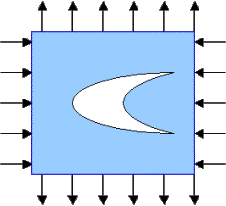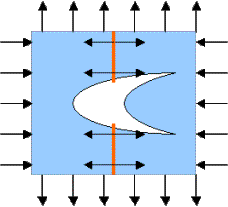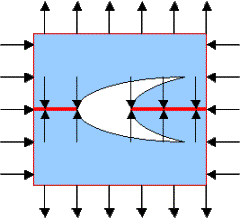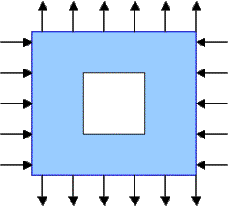Suppose that the applied loadings are of different signs.
This loading corresponds to a uniform stress field in an undamaged plane. The stress is closer to shear which corresponds to a = -1 rather than to uniform loading which corresponds to a = 1 .If a < 0 , the old guess for optimal shapes does not work: The ratio a of ellipses' axes cannot be negative!
In a sense, this problem remains of the Cardano problem which has led to introduction of complex numbers. There, a problem (the solution of cubic equation by the Cardano formula) required to perform an "impossible operation": To take a square root of a negative number. Here, our established rule would require to find an ellipse with negative axes ratio.
Let us analyze the problem again:
We remind that:
The variational theory (stationary necessary conditions) predicts that the energy density is constant everywhere on the boundary of an optimal hole. This condition implies that





